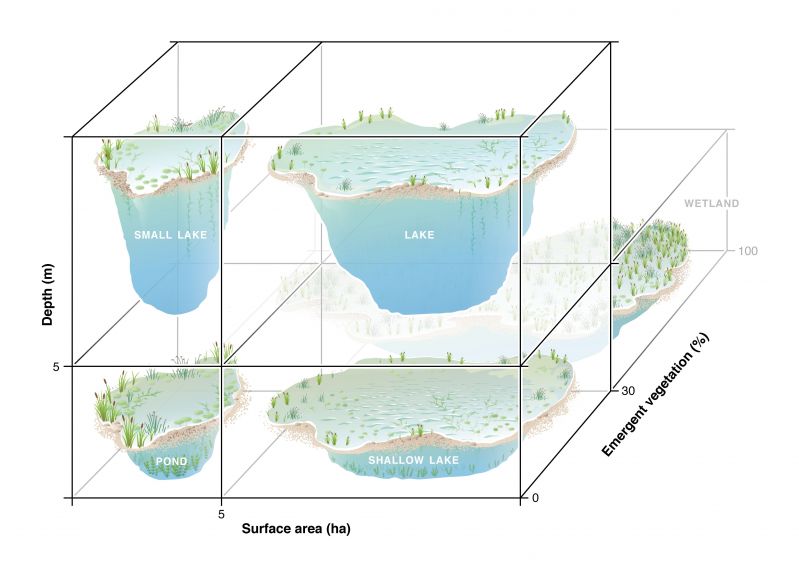A functional definition to distinguish ponds from lakes and wetlands
Published on by Water Network Research, Official research team of The Water Network in Academic
Ponds are often identifed by their small size and shallow depths, but the lack of a universal evidencebased defnition hampers science and weakens legal protection. Here, we compile existing pond defnitions, compare ecosystem metrics (e.g., metabolism, nutrient concentrations, and gas fuxes) among ponds, wetlands, and lakes, and propose an evidence-based pond defnition. Compiled definitions often mentioned surface area and depth, but were largely qualitative and variable. Government legislation rarely defned ponds, despite commonly using the term.

Ponds, as defned in published studies, varied in origin and hydroperiod and were often distinct from lakes and wetlands in water chemistry. We also compared how ecosystem metrics related to three variables often seen in waterbody defnitions: waterbody size, maximum depth, and emergent vegetation cover. Most ecosystem metrics (e.g., water chemistry, gas fuxes, and metabolism) exhibited nonlinear relationships with these variables, with average threshold changes at 3.7± 1.8 ha (median: 1.5 ha) in surface area, 5.8 ± 2.5 m (median: 5.2 m) in depth, and 13.4 ± 6.3% (median: 8.2%) emergent vegetation cover. We use this evidence and prior defnitions to defne ponds as waterbodies that are small (< 5 ha), shallow (< 5 m), with< 30% emergent vegetation and we highlight areas for further study near these boundaries.
This defnition will inform the science, policy, and management of globally abundant and ecologically signifcant pond ecosystems.
SEE FULL PAPER ATTACHED
Media
Taxonomy
- Wetlands
- Lake Management
- Constructed Wetlands
- treatment pond